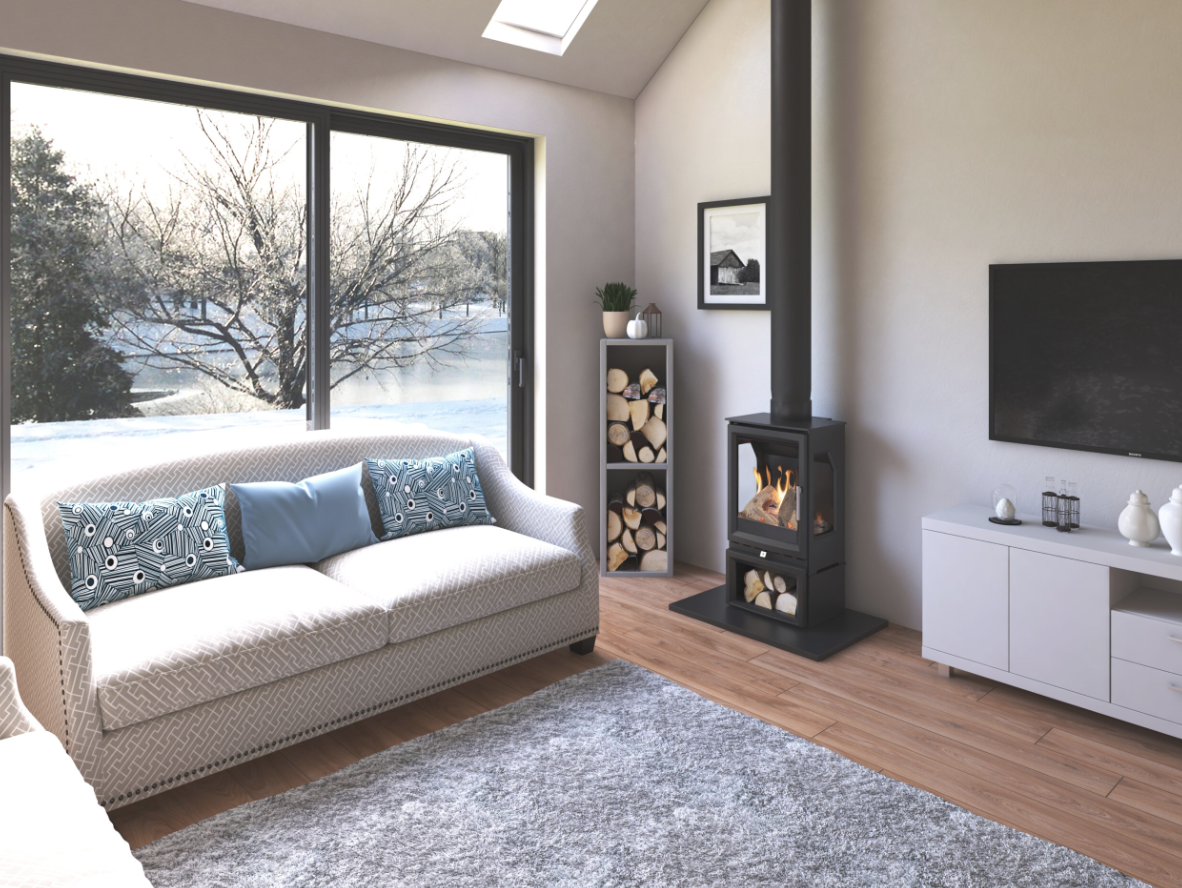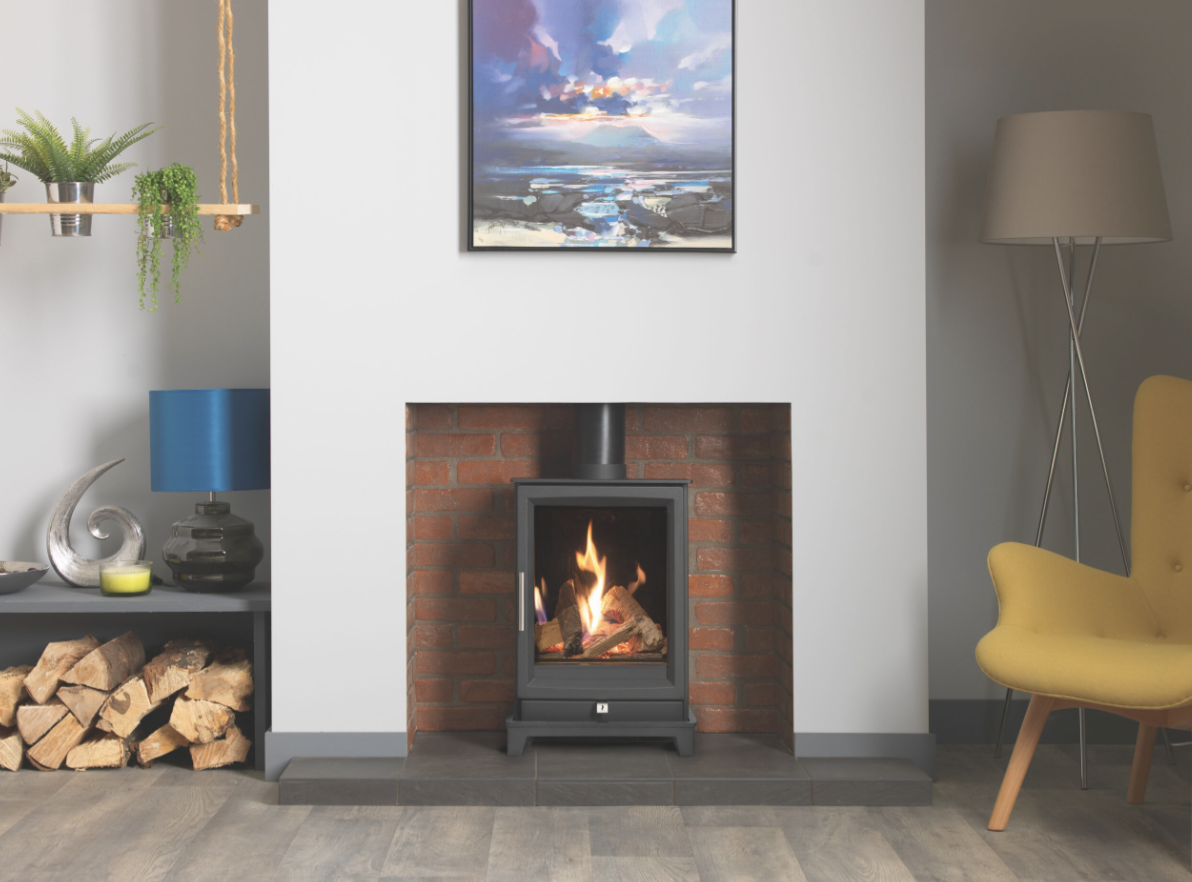Our range of gas stoves has continued to expand over the last few years as people want the look of a traditional wood-burning stove but not necessarily the work which naturally comes with them. Also, with a gas stove, you enjoy instant heat – whereas with a wood-burning stove, there is a delay as it takes time to heat up.

Should you buy a gas stove?
Consider these three simple points – they are some of the main reasons why people buy a gas stove.
- They are clean
- They look authentic
- Fast and easy to get warm
There are obvious differences between a gas stove and a burning stove. Here are a few things you should think about before buying a stove of the gas variety. These points cover advantages and things to also be aware of.
1. Gas stoves must always be fitted by a Gas Safe registered engineer.
2. Always make sure you ask to see the Gas Safe engineer’s Gas Safe registration card – see below for an example:

3. Gas stoves are ok to use in smoke control areas.
4. You normally don’t need additional ventilation for a gas stove.
5. A flue liner may not be needed for gas fires if a chimney is of sound construction.
6. If you do not have a chimney, there are other options, such as using a balanced flue, or an insulated flue liner. A balanced flue gas fire works with glass-fronted fires only. The appliance is sealed from the room by a glass window. A twin-wall pipe is a key feature of a balanced flue gas fire. One of the pipes draw in air for the fire, and the other pipe removes combustion gases to the outside environment.
7. It is highly recommended that gas stoves are serviced on an annual basis by a Gas Safe registered engineer.
8. Gas stoves can be used to heat single rooms rather than a full house, which will save energy and contribute to lower emissions, not to mention saving you money.
9. Unlike a wood-burning stove, a gas stove does not require any chimney sweeping.
10. Fitting a gas stove is a relatively simple process for a qualified expert.
Below: Our Paragon Edge 3S CF Gas Stove

While some people will only want to use a traditional wood-burning stove, the growth of gas stoves has certainly opened up the market to attract those who may otherwise never have owned a stove. Storing, preparing and burning wood, dealing with the ash afterwards, and taking time to sweep a chimney are not to everyones liking. Some won’t have the time; others simply don’t want to make time, and others physically won’t be able to. Gas stoves are here for those who love the look a stove gives without the added work.
Our Gas Stoves:
We currently have a range of gas stoves, both balanced and conventional flues which include:
Paragon Edge Balanced Flue
Paragon Edge Conventional Flue
Paragon Edge 3S Conventional Flue
Paragon Edge 3S Balanced Flue
What are the differences between a conventional and a balanced flue?
Conventional Flues – Fires with conventional flues rely on the natural circulation of air in a room to remove gases from combustion. They work with traditional open fires and glass-fronted fires. The air which is needed for combustion is supplied from the room the appliance is installed in.
Ventilation points are needed at the front of a fire that has a conventional flue, so it can essentially “breathe” and assist in the convection of the radiant heat from the fire.
Conventional flues are not quite as efficient as balanced flues as they draw in air from the (warm) room. This air, which has already been or is being heated by the fire, will be taken away to aid in the combustion process. Although not as efficient as balanced flues, this is a perfectly natural process that comes from combustion and the requirement for the use of air.
Balanced Flues – Balanced flue fires are more efficient than their conventional flue counterparts as the fires are totally sealed from the room. Essentially, there is no drawing of air from the room, which impacts efficiency.
With a balanced flue, the air is taken into the fire via a twin outside pipe (not from the room) mounted on an outside wall towards the rear of the fire. The removal of combustion gases exits from the second vent in the wall to create an ultra-high-efficiency heating method.
A balanced flue is an ideal solution when you don’t have a conventional chimney. These tend to be more common in newer build properties.








